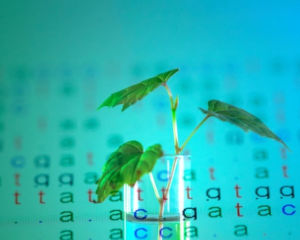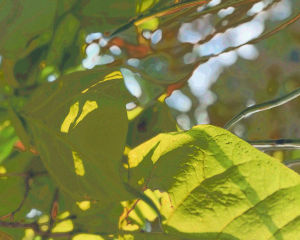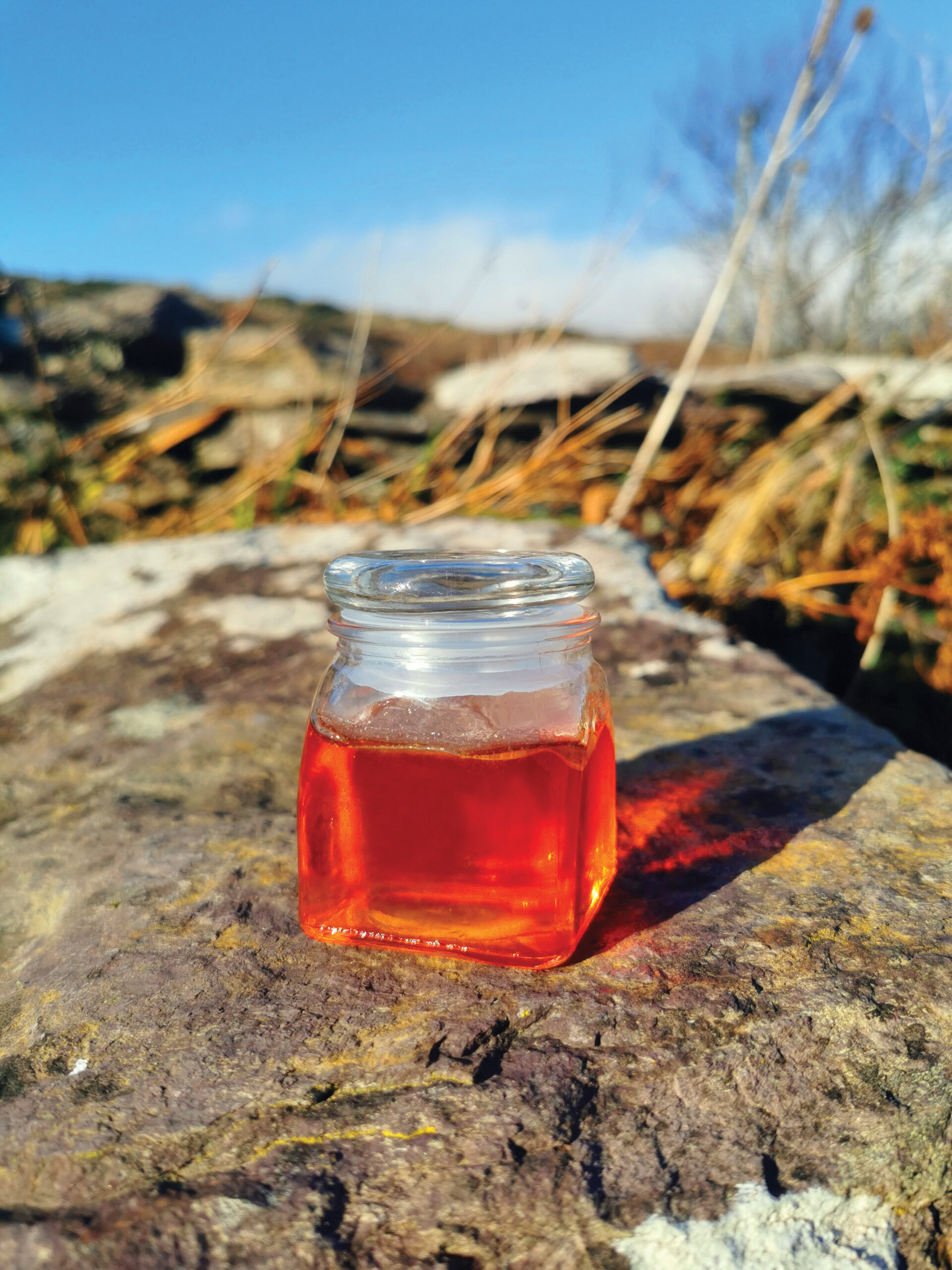
Eat More Plants: Recipes
Crab Apple Jelly
By Mo Stafford
Sign up for our monthly newsletter!
There’s something magical about jam, the way it captures time, taste, and place in a jar. And with so many fruits ripening through the warm sweep of summer into autumn, there’s a jam or jelly to suit everyone. On Ireland’s Wild Atlantic Way, where the Skellig Coast is shaped by wild winds and sea storms, it’s astonishing that anything grows at all. Yet, thanks to our unique geography and the warming influence of the Gulf Stream, this rugged land nurtures a surprising diversity of plant life, including the jewel of autumn preserves: the crab apple.
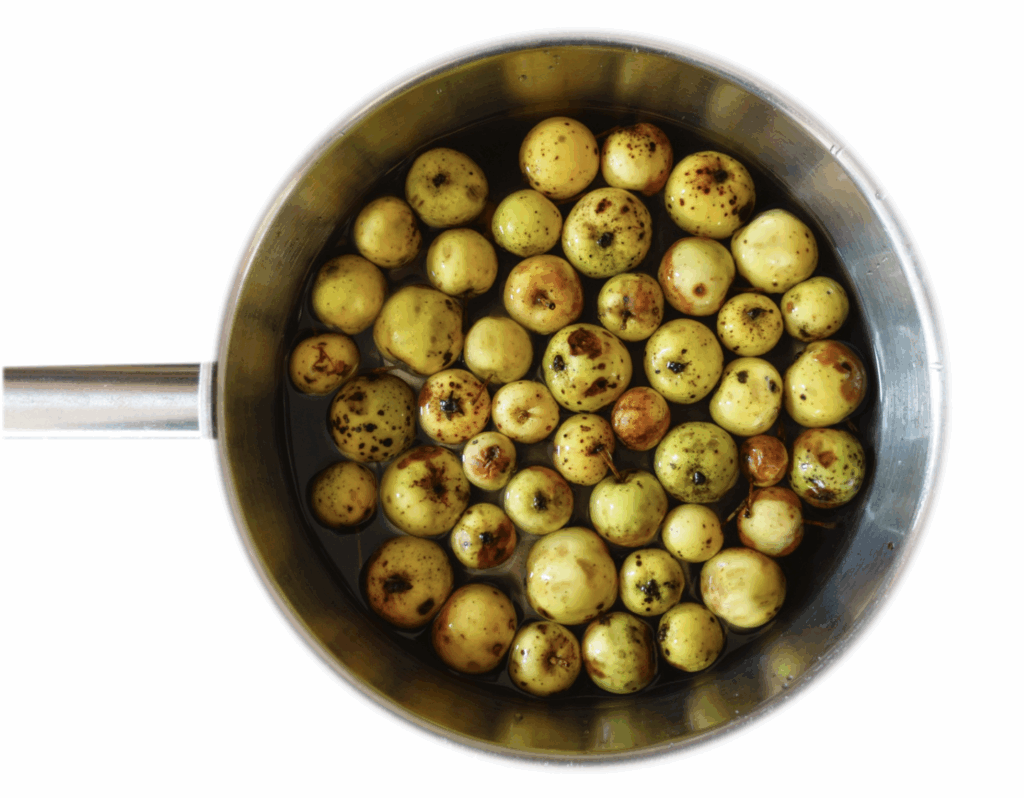
Few flavors are as vivid and distinctive as crab apple jelly. Its brilliant ruby color glows like garnet, and its sweet-tart taste is unmatched. This jelly is not only delicious—it’s steeped in Irish history. The crab apple (Malus sylvestris), native to Ireland, thrives in ancient oak woodlands and along hedgerows. So valued was it in early Ireland that under the Brehon Laws (dating from AD 800), it was classified as one of the “Nobles of the Wood,” reserved for protection due to its importance as a fruiting tree. In May, its fragrant pink-white blossoms draw clouds of pollinators, signaling the promise of an autumn harvest.
Foraging for wild crab apples is a delight. They are typically ready from September through early October. If you don’t have a tree nearby, local farmers’ markets may have small batches available. This jelly, with its tangy depth and radiant hue, makes an extraordinary gift, though it’s hard to part with once tasted.
You’ll need:
- A jelly bag or muslin cloth for straining
- Sterilized glass jars and lids
Ingredients
- Freshly picked crab apples (enough to fill your chosen pot)
- Granulated sugar
Step 1: Preparing the Juice
- Rinse the apples but do not peel or core them.
- Place them in a large saucepan, add just enough water to cover, and bring to a rapid boil. Simmer until the fruit collapses—do not stir or mash if you want a clear jelly.
- Line a colander with muslin and set it over a large bowl or pot. Pour in the fruit pulp and allow the juice to drip through, ideally overnight. Resist the urge to squeeze the cloth—clarity depends on patience.
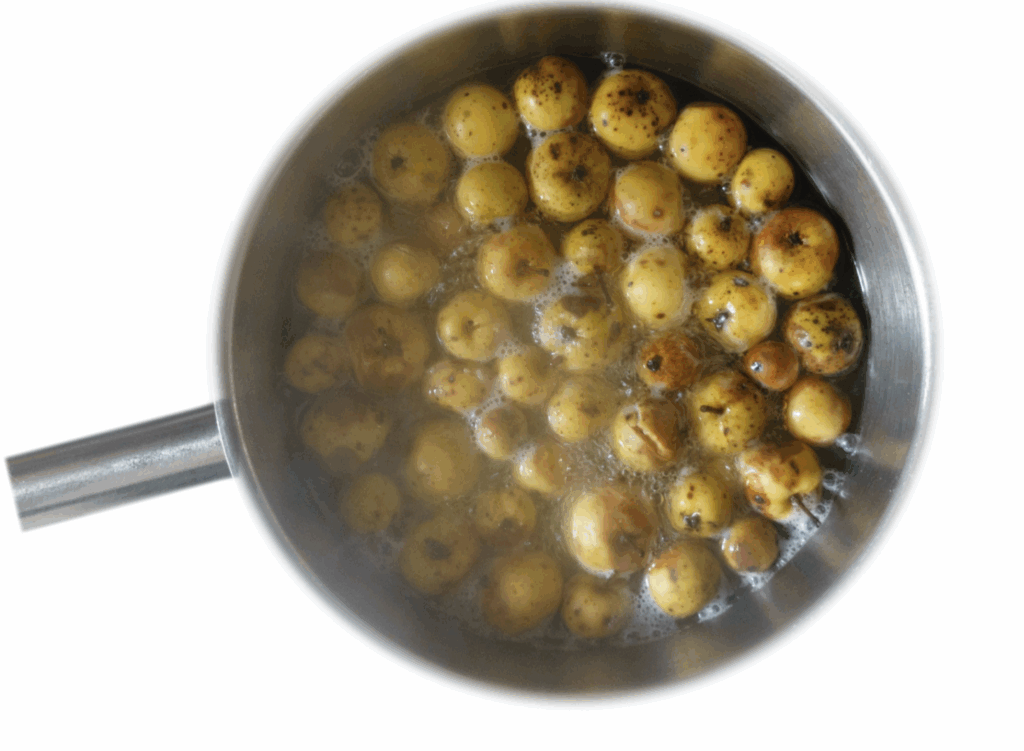
Step 2: Make the Jelly
- Measure the juice. For every pint (about 570 ml), add 450 g (1 lb) of sugar.
- In a clean pot, gently heat the juice and sugar, stirring until dissolved.
- Bring to a rolling boil and cook uncovered, skimming off any froth. Small batches take around 20 minutes; larger ones may need up to 40. Never leave jelly unattended.
- When the jelly begins to set, stir in a small knob of butter to help clarify.
Setting Test
Chill a few teaspoons or saucers in the freezer. Drop a little jelly on one—if it wrinkles slightly when pushed with your finger, it’s ready.
Sterilizing and Storing
Thoroughly wash and rinse jars. Dry them in a 140°C / 284°F oven. Pour the hot jelly into the warm jars and seal tightly while still warm. Store in a cool, dark place.
Notes
You can experiment with other apple varieties, too. Each brings its own character—variations in color, texture, and acidity make every batch unique.
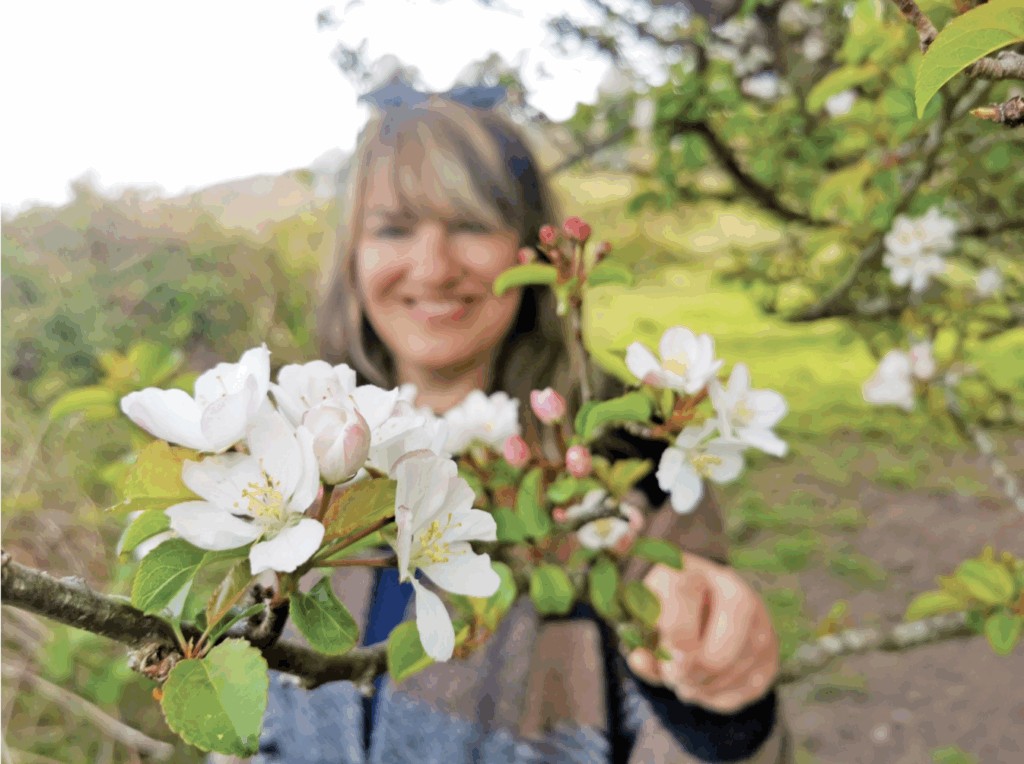
Mo Stafford is the founder of Skellig Coast Kitchen, a heritage cooking and baking experience hosted in her home in Castlecove, County Kerry. Immersed in culinary traditions since childhood, Mo shares her deep love of wild food and traditional Irish cookery through workshops that celebrate the flavors and stories of the land.

As Ireland transitions from the rich, smoky scent of peat-burning to a more sustainable future, its olfactory heritage is evolving. What will become the next iconic aromatic symbol of Ireland?
Click to watch the documentary trailer.
Plantings
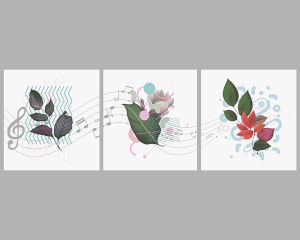
If Oaks and Orchids Could Talk
By Vittoria Traverso
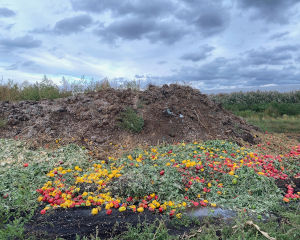
Enrich Your Soil — Enrich Your Life
By Gayil Nalls
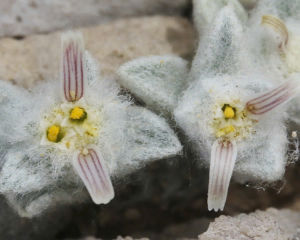
What Can We Learn from the Woolly Devil
By Liz Lindqwister


